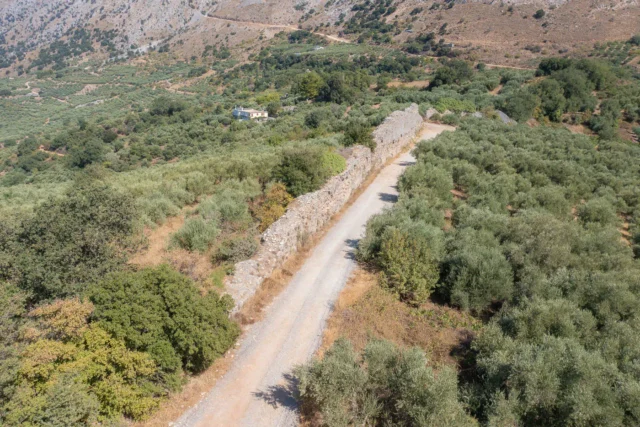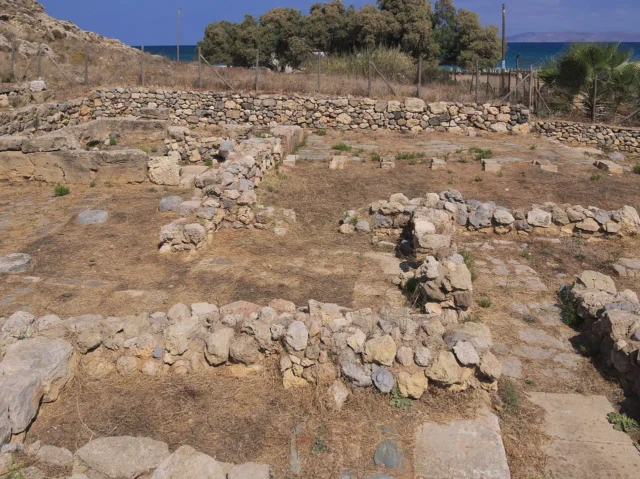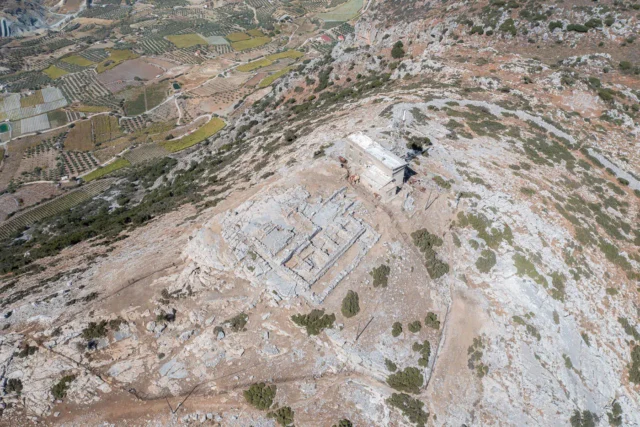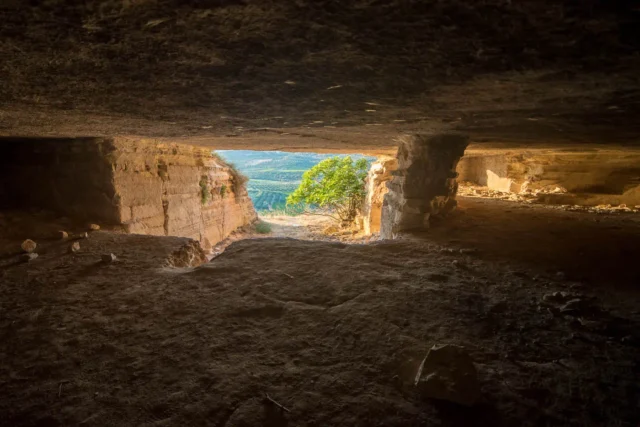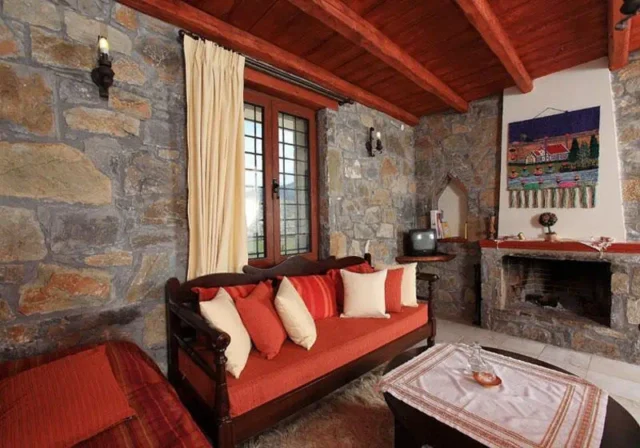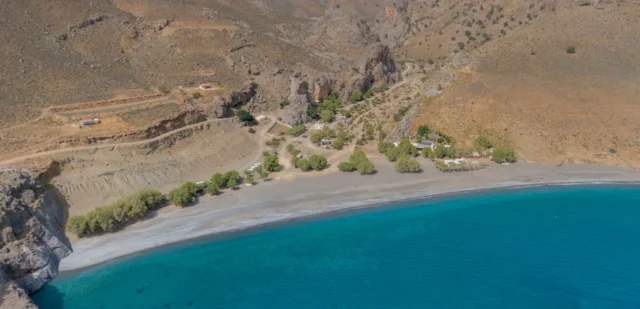415
listings found
Categories
Active filters:
Aqueduct of Lyttos
Explore the remarkable Aqueduct of Lyttos, a testament to Roman engineering ingenuity in ancient Crete. Discover how this impressive structure supplied water to the elevated city of Lyttos, ensuring its prosperity.
Amnisos Sanctuary of Zeus Thenatas
The Sanctuary of Zeus Thenatas at Amnisos, located on the north-central coast of Crete near Heraklion, is an archaeological site with a rich history spanning from the Bronze Age to the Early Iron Age. The sanctuary is dedicated to Zeus Thenatas, a deity associated with both Minoan and Mycenaean traditions. Amnisos, mentioned in Homer's Odyssey, was a significant center for maritime activities and trade during the Bronze Age. Excavations have revealed a 44-meter-long ashlar wall, smaller podia, and a thick layer of ash and burnt animal bones, suggesting animal sacrifice and ritual feasting. Votive offerings include bronze tripods, figurines, miniature weapons, and terracotta figurines of bulls and horses. The sanctuary exemplifies the continuity and change in Cretan religious practices, with the site's dedication to Zeus Thenatas reflecting Minoan traditions, while the adoption of new votive practices and the presence of faience objects highlight the evolving nature of religious expression. The sanctuary was operational from the Protogeometric period (c. 900 BC) to the end of the Early Iron Age (c. 600 BC), with two main phases of use marked by the construction of two temples: Temple A (Late Subminoan period to around 800 BC) and Temple B (around 800 BC to c. 600 BC).
Amnisos Villa of the Lilies
Amnissos, an ancient Minoan port city located on Crete's north coast, boasts the luxurious Villa of the Lilies. This two-story villa, constructed with ashlar blocks during the Middle Minoan IIIA period (around the 17th century BC), features a hall with multiple doors, a bathroom, stairs, and covered paved areas. Its name comes from the frescoes of lilies that once decorated its walls. The villa, excavated in 1932 by Spyridon Marinatos, was likely destroyed by an earthquake or tidal wave around 1500 BC. Amnissos is also significant for its mythological connection to Zeus, whose omphalos (navel) is said to have fallen there. The area was referred to as the Omphalian Plain. The name Amnissos appears in Linear B inscriptions, indicating its importance to the Minoan civilization. The presence of the harbor, various buildings, and an open-air archaic sanctuary dedicated to Zeus further underscores its historical significance.
Giouchtas Minoan Peak Sanctuary
The Giouchtas Minoan Peak Sanctuary, located on the mountain of Giouchtas near Epano Archanes in Crete, is an archaeological site dating back to the Early Bronze Age. The site is associated with Minoan religion and offers insights into the ritual practices and beliefs of the Minoan civilization. Archaeological investigations have revealed structures, including a temenos, and artifacts like clay figurines and pottery fragments. The sanctuary's location on a mountain peak is characteristic of Minoan peak sanctuaries, chosen for its association with the divine realm and visibility. The Giouchtas sanctuary is located near Knossos and Archanes, suggesting it played an important role in the religious and social life of the Minoan people.
Acropolis Smari
The Acropolis of Smari, located on the peak of Prophet Elias near Smari, Crete, is an archaeological site with ruins dating back to the Minoan period (1800 BC to 630 BC). The site features a sanctuary dedicated to Athena Ergani, with ceramic plaques depicting the goddess considered the oldest representations of Athena in Crete. The Acropolis is enclosed by a strong defensive wall and contains settlements, buildings, and terraces for cultivation. Excavations have revealed structures like Megaron A, Megaron B, and Megaron Δ, each with unique features. The walls surrounding the hilltop are the most significant structures, built with large limestone blocks and smaller rectangular stones.
Monumental Olive Tree of Paliama
Ancient olive tree near Moroni, Crete, designated "Monumental" with unique trunk and historical significance.
Karphi archaeological site
Karphi, a Late Minoan IIIC refuge village in Crete, perched high above the Lasithi Plateau, offers a glimpse into Minoan resilience during a time of upheaval. Excavated in the late 1930s, the site reveals a planned settlement with houses, streets, and evidence of diverse cult activities. Its strategic location provided a defensive advantage, offering panoramic views of the Lasithi plain and north-central Crete. The village likely served as a refuge for Minoans seeking safety and survival after the collapse of the Minoan palaces. Despite the harsh conditions, the village featured paved streets, yards, and single-story houses, suggesting a planned and organized community. Karphi stands out for its diverse and widespread cult activities, with shrines dedicated to goddesses and various ritual artifacts. The Temple served as the central focus for ritual activities, housing goddess figures, snake tubes, braziers, and fireboxes. Other areas, such as the Commercial Quarter and the Great House Shrine, also contained evidence of cult practices. Rooms containing offering stands, figurines, and libation vessels indicate that rituals were not confined to formal shrines, suggesting a more informal setting for community offerings. This decentralized approach to ritual practices distinguishes Karphi from other LM IIIC sites.
Sklavokambos
The Sklavokampos Farm Estate, a significant Late Minoan period archaeological site in Crete, Greece, offers a unique window into Minoan life. Discovered in 1930, the estate is located southwest of Heraklion, near Tylissos. The estate's strategic location near the Minoan road network and the fertile Messara Plain suggests it played a crucial role in agricultural production and trade. The estate's architecture is simpler than Minoan palaces, featuring 17 rooms across three levels. The site includes a main room with artifacts like a clay ox head, a Late Minoan IB jug, and a stone rhyton. Sealings from Sklavokampos have been found at other Minoan sites such as Zakros, Gournia, and Hagia Triada, indicating connections across Crete. The estate also housed a small shrine, storerooms for agricultural products, and a toilet with an underground drain. Evidence suggests the estate was part of a larger settlement destroyed by fire, possibly during the Late Minoan IB period.
Trypiti Minoan settlement
Trypiti: An Early Minoan Settlement Perched on a Cretan Hilltop The Early Minoan settlement of Trypiti, located on a rocky hill overlooking the bay of Trypiti in southern Crete, offers […]
Roman tombs on Gra Mantra
Agios Thomas, a Cretan mountain village, features distinctive rock-cut architecture, including Minoan wine presses and Roman tombs. The area, marked by impressive rock formations and natural caves, hosts Byzantine churches and lush greenery. Gra Mantra, a burial monument, contains numerous Roman tombs. A chapel of Kera Spiliotissa near Ardachtia displays a Greco-Roman inscription indicating a sanctuary dedicated to Larki Artemis, Demeter, and Kore. Evidence suggests a cult dedicated to chthonic deities, with local customs reflecting this. The village, part of the Gortyna Municipality, is rich in water and orchards, with a unique geological landscape.
Small Labyrinth cave
The Small Labyrinth Cave, or Labyrinthaki Cave, is an ancient 300-square-meter quarry located 50 kilometers south of Heraklion, between Plouti and Moroni, Crete. Used for stone in Minoan Phaistos, Agia Triada, and Roman Gortys, it features columns and labyrinthine passages. Distinguishing it from the larger Labyrinth Cave on the same hill, it has a depth of 120 meters and shares similar geological formations. Local tradition suggests secret passages connect the two caves, despite rockfall blockages. This site offers insights into ancient quarrying and Crete's historical architecture.
Koules in Magarikari
The Koules of Grammeni, also known as the Koules of Grigoria or Magarikari, is an Ottoman fortress in Crete, Greece. Built in the late 19th century during the Great Cretan Revolution (1866-1869), it was strategically positioned between the villages of Grigoria and Magarikari overlooking the Messara Plain. Measuring 25 meters by 11 meters, with 24 embrasures, it was used as a stronghold by the Ottomans to maintain control over the rebellious Cretan population. In May 1944, it provided refuge to the villagers of Magarikari during the German occupation. Today, the Koules of Grammeni stands as a well-preserved reminder of Crete's turbulent past and the island's enduring spirit.
Moni Koudouma
Koudoumas Monastery is one of the oldest monasteries on the southern coast of central Crete, Greece. It is situated at the exit of the Katarraktis gorge in the Asterousia Mountains, […]
Tsoutsouras
Located on Crete's S. coast (Heraklion), 63km S. of Heraklion town at the Mindris Gorge exit near the Asterousia Mountains. Site of ancient Inatos, Priansos' port. Features a ~2km sand/pebble beach with clear, calm, shallow waters, ideal for families, shaded by tamarisk trees. Organized with amenities like sunbeds, showers, and nearby tavernas. Local tradition attributes therapeutic qualities to the water. Accessible via a paved, winding mountain road. Nearby are Pera Tsoutsouras (shallow, sandy), Maridaki (pebble, isolated, gorge access), and Listis Beach (rocks). Offers a quiet, relaxing atmosphere.
Arodamos guest houses
At an original mountainous landscape of Crete, on the mountain Psiloritis, we have created the appropriate diggings to extend hospitality to the journeyer of the unique Cretan countryside, to whom […]
Trypiti beach
Located on the southern coast of Crete's Heraklion prefecture within the Asterousia Mountains, approximately 57-73 km south of Heraklion city and 12 km east of Lendas. It sits at the exit of the Tripiti Gorge. The name relates to local geology and the Panagia Tripiti chapel cave. Access involves unpaved dirt tracks from Lendas or Vassiliki, often requiring a 4x4 vehicle, particularly the route through the narrow final gorge passage. The 400m beach features fine pebbles, clear, calm waters sheltered by Cape Fylakas, though it deepens quickly offshore. Tamarisk trees and cliffs offer shade. Despite difficult access, it's popular with locals and can be crowded. Basic tavernas are available, but no organized facilities exist. The area, part of Natura 2000, sees local caravan presence. Activities include swimming, snorkeling, hiking to nearby Minoan ruins of Papouri, and stargazing.









